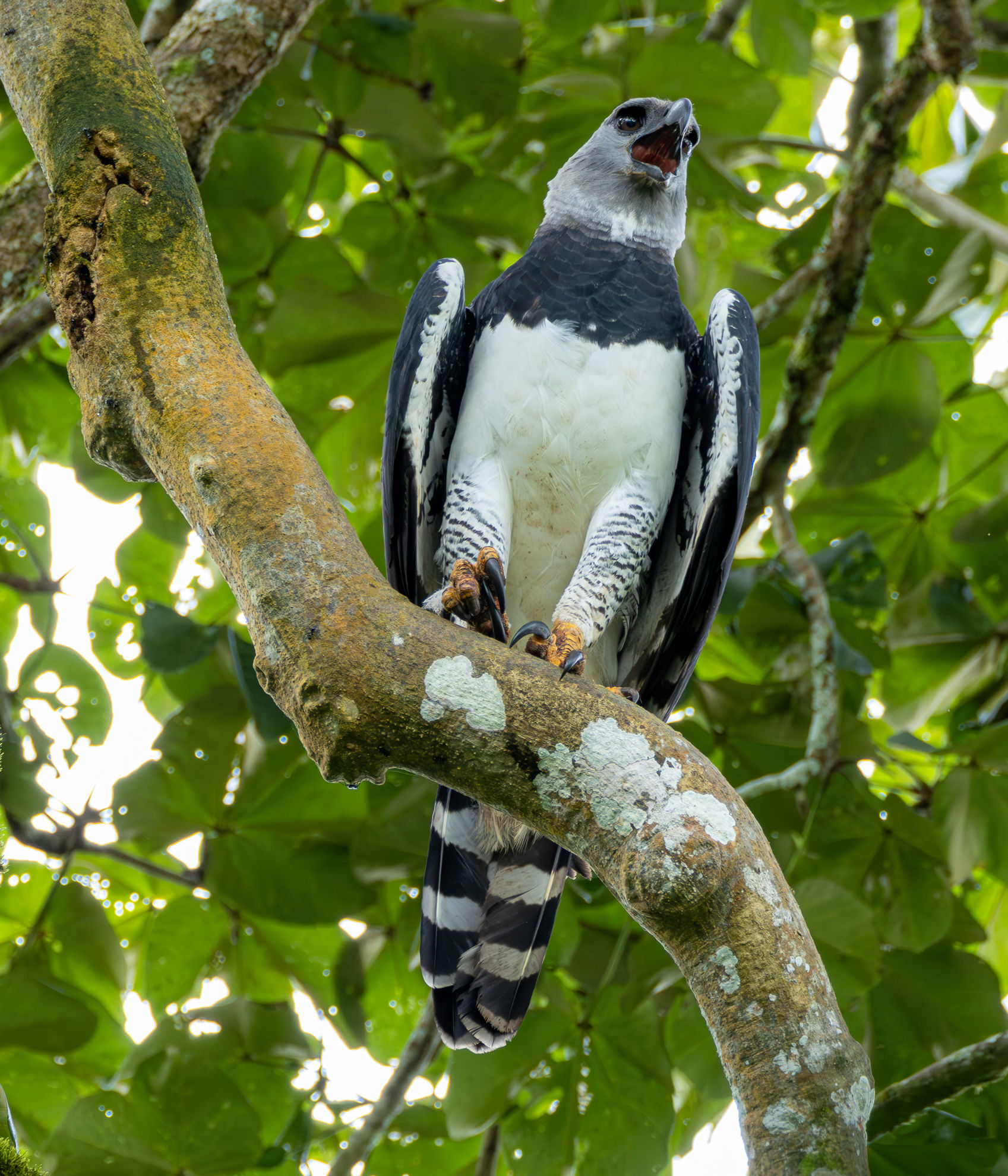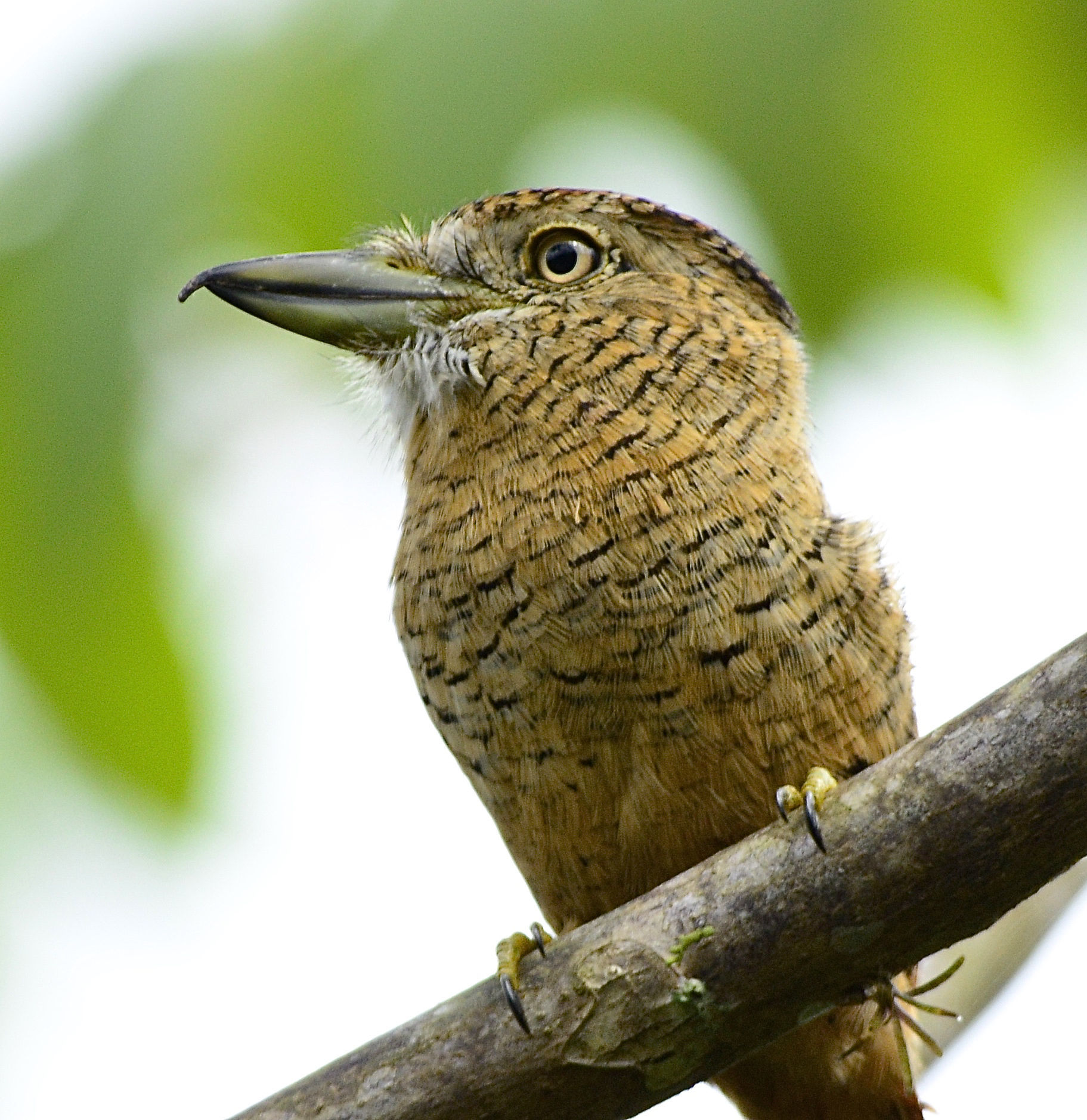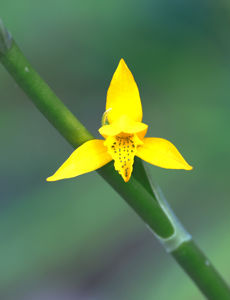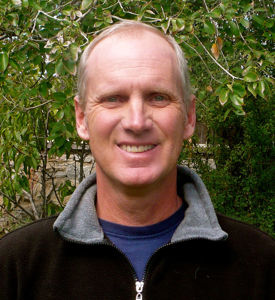Toll Free: 800.328.8368
Phone: 512.328.5221
Panama's Darien Lowlands: Canopy Camp
Upcoming Dates
October 11 - 19, 2025
Departs
Panama City
Returns
Panama City
Tour Limit
Online booking not available
Itinerary
Read More
Harpy Eagle © Carlos Bethancourt
Species-rich lowland forest birding, with emphasis on 25–30 species of eastern specialties that are seldom, if ever, found in the Canal Zone, along with an impressive cross section of more widespread Neotropical birds and, in some years, good chances for seeing nesting Harpy Eagles. African-style deluxe tented camp will allow us to bird the Darién lowlands in comfort.
This tour to the lowlands of eastern Panama fuses the rich diversity of tropical birds for which Panama is justly famous with the classic atmosphere of a luxurious African tented camp. We will be quartered in the wonderful Canopy Camp, courtesy of Raúl Arias de Para, whose vision for sustainable ecotourism and devotion to preserving Panama’s birds and wild places introduced the birding world to the famed Canopy Tower and the Canopy Lodge in El Valle. Located in the lowlands of Darién, just a four-hour-drive (via the Pan-American highway) from Panama City, and tucked at the base of some low-lying hills whose forested slopes are part of a protected zone, this camp will provide a comfortable base for a great week of Neotropical birding.
Our accommodation will be in spacious, walk-in, African-style tents, mounted on platforms, and replete with comfortable beds, fans, and with adjoining (right outside the tent, on the same deck) private bathrooms with hot-water showers and flush toilets. Keeping with the tradition established by the other Canopy lodges, the camp will offer imaginatively prepared, tasty meals, and an abundance of cold drinks.
The camp clearing affords a fabulous view of the surrounding forest, and is bordered by Heliconia thickets that often buzz with the activity of Pale-bellied and Rufous-breasted hermits, and reverberate with the cascading songs of White-bellied Antbirds. Dawn brings a flurry of activity and a cacophony of avian sound, dominated by the screeching calls of commuting parrots, the yelping of Yellow-throated Toucans, and the incessant croaking of Keel-billed Toucans, but also sometimes including the raucous calls of Red-throated Caracaras, the liquid gurgling of an active colony of Chestnut-headed Oropendolas, the noisy chattering of White-headed Wrens, the incessant calls of Piratic Flycatchers, and the plaintive whistles of Barred Puffbirds. Stands of planted Vervain and Verbena, along the entrance road and in the main clearing, swarm with a variety of hummingbirds, including the dazzling Blue-throated Goldentail (dry season only).
Our mornings and late afternoons will be spent exploring the camp trail system and a number of nearby sites between the Camp and Yaviza. In addition to seeing a broad cross section of toucans, trogons, motmots, woodcreepers, antbirds, tanagers, and other tropical birds that typify the Canal Zone, we will also search for a number of special birds whose Panamanian ranges are (in most cases) largely restricted to the far eastern lowlands and foothills, among them: Capped and Cocoi herons; three species of macaws (Great Green, Blue-and-yellow, and Chestnut-fronted); Spectacled Parrotlet; Gray-cheeked Nunlet; Rufous-tailed and Dusky-backed (rare) jacamars; Black-tailed Trogon; Red-rumped, Spot-breasted, and Golden-green woodpeckers; Red-billed Scythebill; Double-banded Graytail; Black Antshrike; Rusty-winged Antwren; Bare-crowned Antbird; Black-billed Flycatcher (rare); Sooty-headed Tyrannulet; Yellow-breasted Flycatcher; Choco Sirystes; One-colored Becard; Golden-headed Manakin; Bicolored Wren; Black-capped Donacobius; White-eared Conebill; Orange-crowned Oriole; and Black Oropendola. In 2014, our inaugural tour turned up a spectacular male Ruby-topaz Hummingbird right in camp, for one of a mere handful of country records. In 2016-2018, Canopy Camp personnel learned of multiple active Harpy Eagle nests, and our groups during this period were treated to exceptional views of this iconic raptor (one group even saw a perched Harpy Eagle from the camp clearing!). Although sightings of Harpy Eagles can never be guaranteed, Harpy Eagle chicks have prolonged nesting and fledging periods (and continue to be fed by the adults in the vicinity of the nest for months after fledging), and adults tend to return to the same nests every other year. This means that there is a decent chance that at least one known nest in the area may be active for several months out of each year. Accordingly, our itinerary will maintain the built-in flexibility to take advantage of conditions on the ground in prioritizing any opportunities to visit active Harpy (and/or Crested) Eagle nests.
VENT is proud to have once again pioneered tours to what is certain to become one of Central America’s “must visit” birding destinations.
Single-site tour (except for first and last nights in Panama City) with no internal flights; mostly short drives, except for four-hour-drive to and from Panama City at the beginning (broken up with birding en route) and end of the trip; one or two boat rides in dugout canoes with motors to access Embera lands; comfortable accommodations in luxury tented-camp (private bathrooms), with good food and cold drinks; birding on-site or at various locales within short drive of camp; most birding along dirt roads or trails of easy to moderate grade, except for the main camp trail, which includes some steeper sections. Hikes to staked-out Harpy Eagle nests may be much longer, but are still likely to be along relatively flat trails of easy grade. Also, depending on the nest site in a given year, accessing potential Harpy Eagle areas may require riding on horseback.

Barred Puffbird © Dan Roberts
Price: $4,595
Please contact the VENT office to register for this special departure.
Departure Dates
Reserve October 11 - 19, 2025 (Online booking not available.)
Reserve January 10 - 18, 2026 (Online booking not available.)
Reserve October 31 - November 8, 2026 (Online booking not available.)
Reserve January 13 - 21, 2027 (Online booking not available.)
Reserve October 9 - 17, 2027 (Online booking not available.)
Route Map
Tour Leaders

Local
Leader
Field Reports
No Field Reports
Connecting Tours
Operations Manager

Erik
Lindqvist
Questions? Contact the Operations Manager or call 800.328.8368 or 512.328.5221



